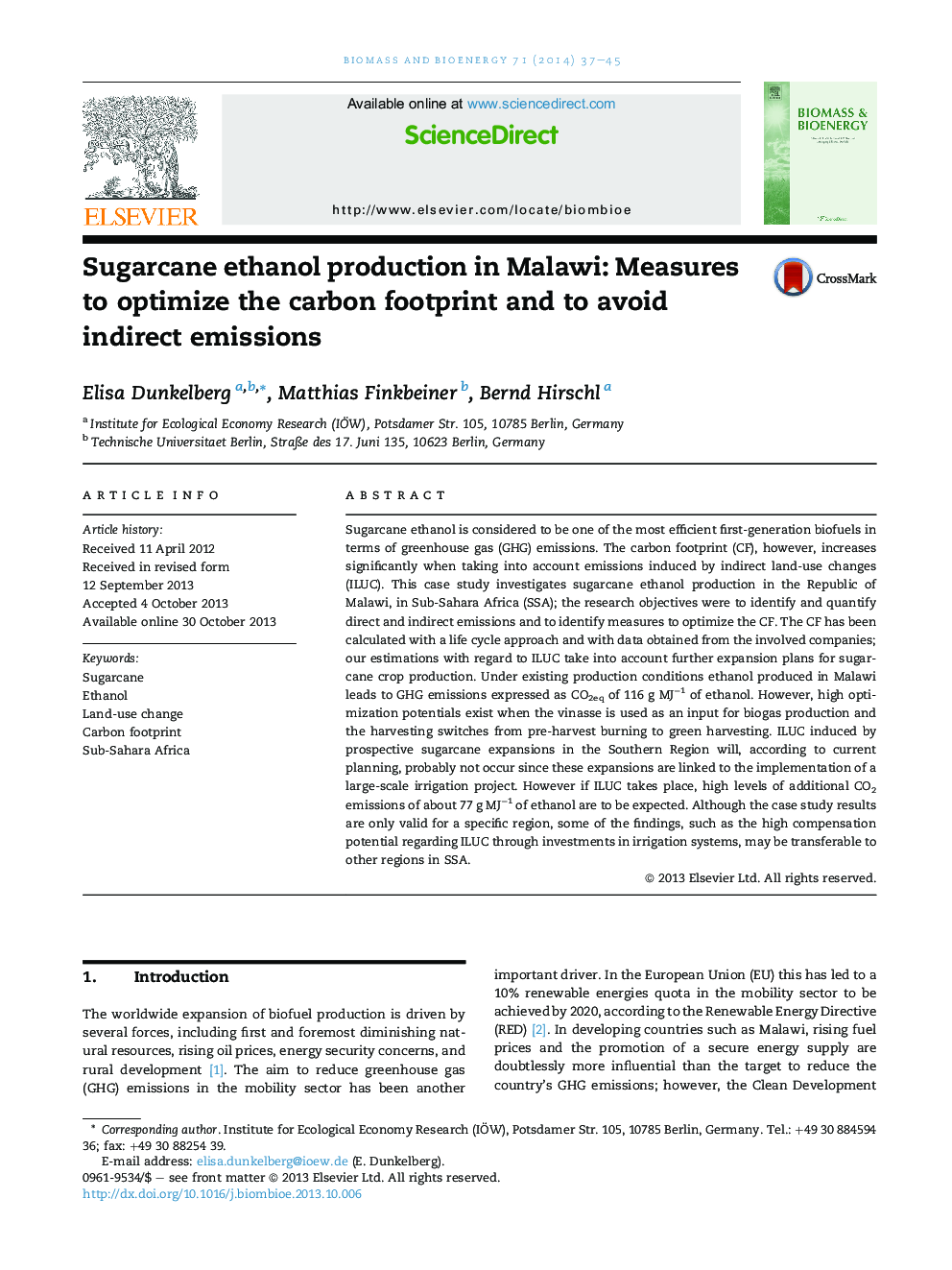| کد مقاله | کد نشریه | سال انتشار | مقاله انگلیسی | نسخه تمام متن |
|---|---|---|---|---|
| 676802 | 1459822 | 2014 | 9 صفحه PDF | دانلود رایگان |
• We conducted a case study on sugarcane ethanol production in Malawi and calculated its carbon footprint (CF).
• The current CF of sugarcane ethanol produced in the Southern Region in Malawi amounts for 116 g MJ−1 of ethanol.
• The usage of vinasse in biogas plants would significantly improve the CF.
• Another optimization measure is to switch from pre-harvest burning to green harvesting.
• Indirect land use change can be avoided by investing in large scale irrigations systems.
Sugarcane ethanol is considered to be one of the most efficient first-generation biofuels in terms of greenhouse gas (GHG) emissions. The carbon footprint (CF), however, increases significantly when taking into account emissions induced by indirect land-use changes (ILUC). This case study investigates sugarcane ethanol production in the Republic of Malawi, in Sub-Sahara Africa (SSA); the research objectives were to identify and quantify direct and indirect emissions and to identify measures to optimize the CF. The CF has been calculated with a life cycle approach and with data obtained from the involved companies; our estimations with regard to ILUC take into account further expansion plans for sugarcane crop production. Under existing production conditions ethanol produced in Malawi leads to GHG emissions expressed as CO2eq of 116 g MJ−1 of ethanol. However, high optimization potentials exist when the vinasse is used as an input for biogas production and the harvesting switches from pre-harvest burning to green harvesting. ILUC induced by prospective sugarcane expansions in the Southern Region will, according to current planning, probably not occur since these expansions are linked to the implementation of a large-scale irrigation project. However if ILUC takes place, high levels of additional CO2 emissions of about 77 g MJ−1 of ethanol are to be expected. Although the case study results are only valid for a specific region, some of the findings, such as the high compensation potential regarding ILUC through investments in irrigation systems, may be transferable to other regions in SSA.
Journal: Biomass and Bioenergy - Volume 71, December 2014, Pages 37–45
